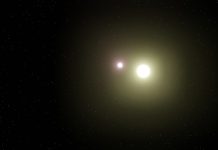New genetic research challenges the belief in human evolution and migration of there being a single African population which gave rise to all humans
Researchers testing the genetic material of current African populations and comparing it to fossil evidence have revealed a groundbreaking model of human evolution: our previous predictions of human evolution and migration histories may have been wrong.
Contrary to previous beliefs that a single African population gave rise to all humans, this research, published in Nature scientific journal, suggests a more complex scenario.
Uncertainty in human evolution and migration
The origin and divergence of human evolution and migration across Africa have long been uncertain.
Limited fossil and ancient genomic data have made it challenging to understand how different branches of human development emerged and how people migrated within the continent.

Testing competing models of evolution and migration
The research team, led by Brenna Henn of UC Davis and Simon Gravel of McGill University, explored various models proposed in paleoanthropology and genetics literature.
They incorporated population genome data from southern, eastern, and western Africa, including newly sequenced genomes from 44 individuals of the Nama indigenous population in South Africa.
Early population split and weakly structured stem
According to the newly proposed model, the earliest population split detectable in contemporary people occurred around 120,000 to 135,000 years ago.
This split followed a long mixing period between two or more weakly genetically differentiated Homo populations.
Despite the split, migration between these populations continued, resulting in a weakly structured stem.

Implications for fossil interpretation and human genetic variation
The researchers believe their model provides a better explanation for the genetic variation observed among individual humans and human groups than previous models.
They argue against the idea that morphologically divergent hominid fossils, such as Homo naledi, represent branches that contributed to the evolution of Homo sapiens. This has important implications for interpreting the fossil record.
The research team also predicts that 1-4% of genetic differentiation among contemporary human populations can be attributed to variation in the stem populations, shedding light on the diversity observed in modern humans.
The study involved contributions from researchers at UC Davis, McGill University, the University of Wisconsin, Baylor College of Medicine, and Stellenbosch University, South Africa.
The findings significantly advance anthropological science and challenge existing theories about human evolution and migration in Africa.
Editor's Recommended Articles
-
Must Read >> It is time to boost innovation in Africa and Europe















Wrong again. Only if it is taken into account that the evolution of intelligence is the “main process”, i.e. at the basis of the origin of the human species, all the pieces of the puzzle can not be connected into one whole. Even then, some parts won’t fit because we’re not that technologically advanced yet.